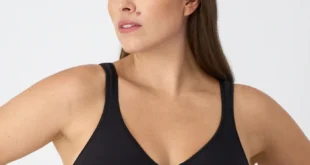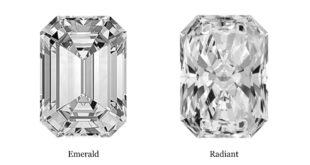Clothing production has doubled over the ultimate 15 years at the same time as apparel use has reduced in size by way of more than a third.
The fast fashion enterprise version is unsustainable, with its low production costs and reliance on patron calls.
The round economy goal is to deal with the environmental, social, and waste impacts even as changing our customer conduct.
This landscape, one of the most faraway spots on the global, is traditionally known for majestic volcanoes and salt residences. In these new snapshots, however, the landscapes had been transformed through 59,000 lots of clothes (worn and unworn) that had fashioned mountains atop the wasteland plateaus.
What are the hidden fees of rapid style?
Our cutting-edge garb fact has been shaped by “speedy fashion”, an enterprise version based on low manufacturing expenses and everyday customer purchases of the latest objects. The more than one social and environmental fees are not factored into the consumer price tags, and this drives the model’s unsustainability. These hidden expenses include:
Environmental
Producing clothes requires a large quantity of water (e.g., to develop cotton), electricity (to energy the spinning and production techniques), and chemical substances (e.g., to fertilize cotton flowers and dye textiles). In line with estimates, it takes between 4,000 liters to 10000 liters of water to supply a pair of types of denim. That’s about the amount the average person could drink over five years. Excessive water usage provides growing water stress throughout the globe, power use generates carbon emissions, and wastewater from death processes pollutes rivers.
Social
Clothes are produced in low-earning nations in which labor laws no longer constantly protect workers. Labor rights violations have historically been commonplace in garment supply chains, and unluckily matters are not improving. Low wages, child and bonded labor, and unsafe working practices still exist and, indeed, were getting worse on the grounds in 2017.
Waste
Low production prices combined with a poor call for forecasting means large quantities of garments are produced and in no way worn, leading to mountains of waste. As clothes pile up outside, they launch toxins into the surroundings: the cost of addressing this environmental damage may be as good a deal as €2 hundred per pair of jeans. In nations including ours, clothes are thrown away at double the fee they had been twenty years ago.
Regardless of the excessive level of resources that go into making garments, up to 40% of all textile materials produced for garments by no means attain the cease patron and are usually both burned or come to be in the landfill. That is because making the clothes is reasonably priced, and brands have traditionally not been compelled to pay for the environmental charges. This has brought about underinvestment in improving negative demand forecasting, mainly too many brands generating more than they can sell.
Modifications in advance to how you may buy, use and sell clothes in a circular financial system:
The round financial system will reshape the garb enterprise. Inside the round economic system, products are designed and sold in the sort of way that they may be used for longer and might maintain their value for longer. Here are a number of the adjustments you may expect and their effect.
The ease of resale will set off any other vital change: clients will see their garments as a form of funding. As the Economist recently stated, some enterprising younger customers are already considering the capability to lease or resell an item to defray the cost of a highly-priced clothier dress or handbag. The Economist discovered that some are already making thousands a month in clothes leases alone.
1. You’ll hire out your subsequent outfit (and recognize its resale price)
Approximately $36 billion turned spent on 2d hand garb in 2021, which outpaces the $30 billion spent on speedy style. That hole is slated to widen as income, condominium, and buying and selling platforms grow customers and clients. Growing 2d-hand income drives down the requirement for “virgin” clothes and represents a way for traditional speedy fashion brands (stores and consumers) to make cash from other sources.
2. Income triggered by oversupply could be less commonplace
Enhancing demand forecasting is key to reducing up to 40% of the fabric, which never makes it to end consumers. Some fast fashion businesses are already doing this with cloud-based delivery chain control software programs to preserve inventory stages low and robotically reorder the ones who sell well. By lowering unsold stock, agencies can keep cash, with surroundings factors becoming a driving force for cost financial savings. Fast fashion newbies are leading their more worthy traditional rapid fashion rivals in this regard but assume the others will trap up quickly.
3. You’ll restore objects while hems tear and zippers ruin
In current years, tailors are not continually easy to locate, and the value to restore an object has regularly outpaced the fee to update it. As the world reshapes, we’ll buy fewer gadgets as the (presently) hidden fees of these gadgets can be factored into what we pay on the signup. According to the latest study, a pair of jeans could want to cost €30 extra, a good way to remember the social and environmental costs related to production. Clients and small agencies will react to this new need for apparel repair. Expect to look tailors shooting up near you.
4. You’ll put on more new clothing crafted from recycled materials
Currently, less than 1% of used clothing is recycled and returned into clothes, which means virgin production (for instance, cotton) is sort of always preferred to the usage of recycled materials. this is due, in part, to how to garb is designed and trouble disassembling garments. This startup specializes in garment disassembly generation:
“setting apart fabrics from buttons, labels and zips is time eating and difficult and ends in a wastage of over 1/2 of the cloth from the garment earlier than it can input a recycling technique.” converting the thread with which garments are sewn together ought to growth garment recyclability to 90% and cut the carbon footprint via 50%, in keeping with their latest look at. Even the nylon used in tights may be chemically recycled and become new underclothes.
4. Your jeans will get a remodel
Denim is one of the more hard-to-recycle apparel objects, and new pointers for denim design have been developed to make it less complicated. Currently, manufacturers, together with Lee, guess jeans, mud denim, and, more significantly, were experimenting with new designs and processes.
Your next climate-conscious pair of jeans will still have the same conventional look, just characteristic planet-pleasant dyes, buttons that are easy to unscrew using recyclers, stone-wash patterns created by laser technology, and biodegradable threads. The traditional rivet as we know it today may fall by the wayside – it can make recycling more challenging.
It is time the fashion enterprise had a makeover
The changes emerging in our shops and closets are merely signs of broader industry shifts, made possible thanks to developing awareness of the adjustments leaders throughout the arena are prioritizing. For instance, a new supply chain regulation in Germany will force corporations to broaden structures for identifying and addressing human rights violations of their delivery chains: a comparable piece of rules is being raised on an ECU stage.
Focus from consumers, stores and governments will hold to reshape the arena, protecting people and the surroundings in a manner. This kind of makeover has been lengthy and past due – however, it’ll continue to turn heads for decades to come back.
 Lifeyet News Lifeyet News
Lifeyet News Lifeyet News





